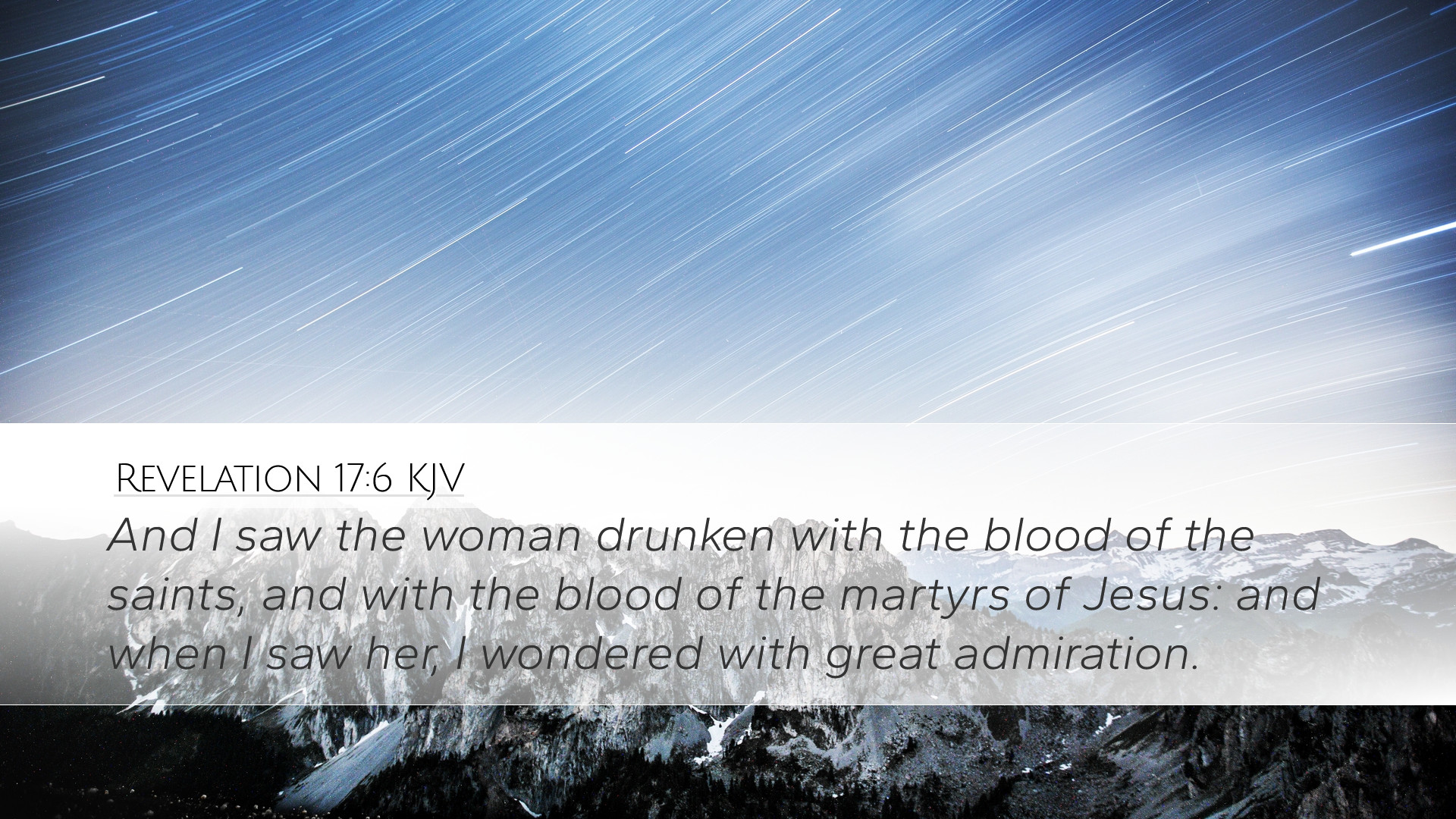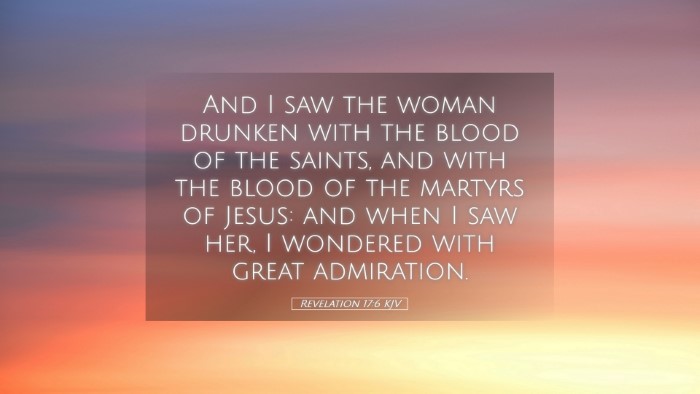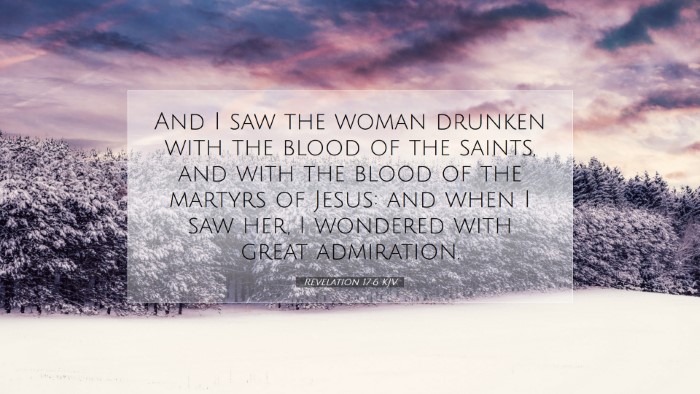Commentary on Revelation 17:6
Contextual Overview: Revelation 17 presents a vivid imagery of the fall of Babylon, the great harlot, which symbolizes the corrupting influences in society that stand in opposition to God and His people. The representation of Babylon as a woman clothed in purple and scarlet, adorned with riches, signifies the allure of materialism, false religion, and debauchery.
Verse Analysis: Revelation 17:6
“And I saw the woman drunken with the blood of the saints, and with the blood of the martyrs of Jesus: and when I saw her, I wondered with great admiration.”
1. The Identity of the Woman
This woman, described as "drunken with the blood of the saints," symbolizes a corrupt religious system that has persecuted the followers of Christ throughout history. Matthew Henry elaborates that this imagery illustrates the depth of her depravity and the extent of her influence. She is not merely drawing on the blood of martyrs as a sign of disdain but is intoxicated by the very violence inflicted upon the faithful.
2. The Blood of the Saints
Albert Barnes comments on the significance of the "blood of the saints" as a representation of the suffering of the righteous. He notes that this element is crucial as it symbolizes the sacrifices made by believers — a theme pervasive throughout biblical accounts. The phrase embodies both literal martyrdom and metaphorical rejection of God's representatives. The gnashing of teeth and the slaughtering of the faithful highlight the age-old conflict between good and evil, leading us to reflect on the cost of discipleship.
3. Martyrs of Jesus
Adam Clarke points out that the title "martyrs of Jesus" emphasizes the motivation behind their persecution — their allegiance to Jesus Christ. The use of the term "martyr" encapsulates the ultimate commitment to faith, where one would rather face death than deny their Lord. This stands as a clear admonition to contemporary believers regarding the potential consequences of their faith in a hostile environment.
4. John's Reaction
John's reaction, “I wondered with great admiration,” presents an interesting dynamic. Matthew Henry suggests that this wonder could stem from fascination but also from horror. In observing such a powerful corrupt entity, there lies a temptation to marvel at its splendor while recognizing the underlying evil. It serves as a reminder to the church to remain vigilant against such seductive practices that can lead believers astray.
5. Theological Implications
This passage brings forth profound theological implications regarding the nature of evil and the church’s role amidst persecution. Barnes notes that it serves as a warning against complacency in faith amidst societal pressures. The text insinuates that the church will endure suffering but ultimately points toward vindication and cosmic justice, as God will prevail over the forces of darkness.
6. Practical Applications for Believers
Reflecting on the "drunkenness" of the woman with the blood of saints, Clarke urges believers to abandon all senses of complacency regarding spiritual warfare. The great harlot reminds us that contrary to societal norms, Christians are called to stand out, often facing opposition. Consequently, maintaining a focus on Jesus and His teachings allows believers to endure and overcome, even in persecution.
7. Conclusion
Revelation 17:6 invites readers into the vivid confrontation between righteousness and wickedness, provoking a deep contemplation of the costs associated with discipleship. The rich language and imagery present a call to not only recognize the dangers of the world but also to understand the depth of God's redemptive plan amid turmoil. Thus, this verse serves as both a warning and an encouragement, leading the faithful to remain steadfast in their commitment to Christ, the true and reigning King.
Final Thoughts
In light of these insights, pastors and scholars must approach Revelation 17:6 with a dual lens of caution and hope. As they interpret its implications for contemporary faith, they can better equip their congregations to navigate the complexities of a world that mirrors the harlotry of Babylon.


